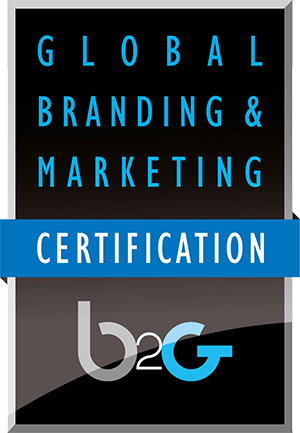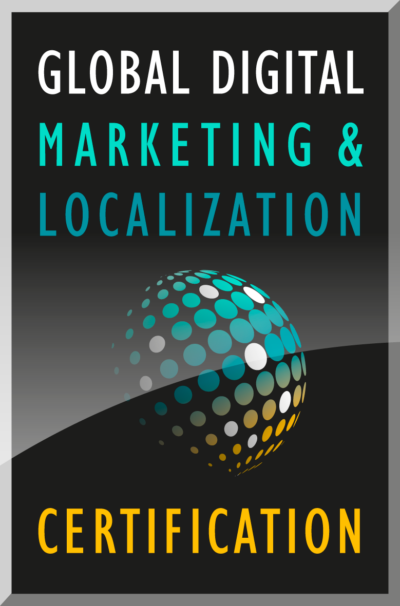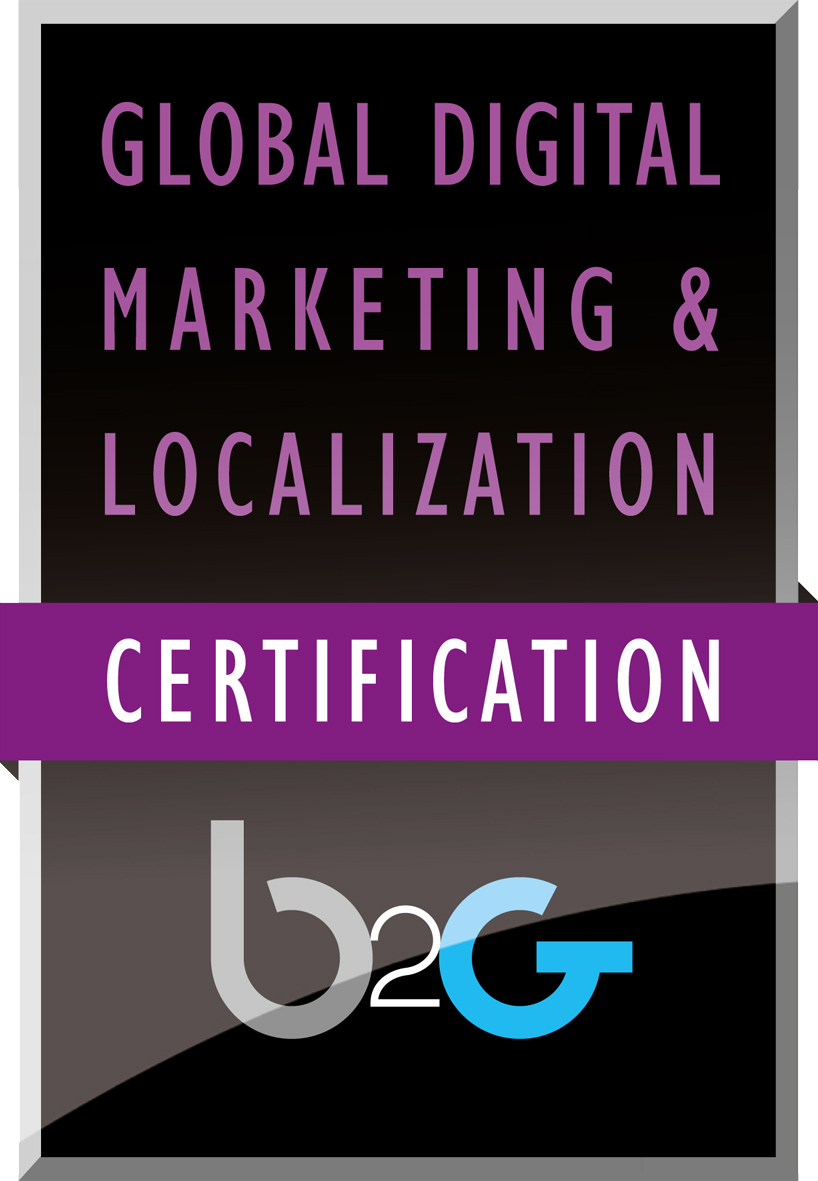This is a paper presented by Lucy Kirmond, a recent graduate of the Global Digital Marketing and Localization Certification (GDMLC) program. This paper presents the work being produced by students of The Localization Institute’s Global Digital Marketing and Localization Certificate program. The contents of this Paper are presented to create discussion in the global marketing industry on this topic; the contents of this paper are not to be considered an adopted standard of any kind. This does not represent the official position of Brand2Global Conference, The Localization Institute, or the author’s organization.
The strategy of a company’s localisation method is very dependent on the company’s size and global presence. In this essay I will discuss the strategy of the company I work at and I will primarily focus on the localisation strategy of its website, as a digital media outlet. In addition to this I will examine the centralised nature of the company’s localisation and marketing practices. I will also discuss the company’s strategy, due to the nature of the engineering industry, in relation to other companies in both the engineering and other sectors. This commentary will focus on the centralised nature of the company’s localisation and marketing practices both alone and in relation to another company.
Due to the nature of an engineering company in general being business-to-business, rather than business-to-consumer, the level of self-expression in terms of media content, tends to be lower than that of a cosmetics company for example. Therefore, when it comes to finding a localisation solution for digital media, such as our website – it is better to adopt a centralised approach to the majority of content. Our website, for example is translated into 17 languages but each language website has the same format, layout and content as the English original website. In cases where the level of self-expression necessary for a company’s marketing is high, cultural customisation is key as these companies are based in the consumer sector ; cosmetics, consumer electronics, clothing, etc. In these areas, cultural customisation is key to reaching a global consumer audience who have a broader range of options available to them and it is key to appeal to their behaviours and perceptions from a cultural standpoint. When creating a website for a cosmetics brand, for example, it is important to ensure that you understand your target audience – whether it’s more globally minded or more locally minded. It is important to make sure that all digital content is culturally consistent with the expectations of the end-user.
As the engineering industry has a lower level of self-expression – especially industrial metrology – it is less important to make the website localisation culturally customised. Therefore when localising the website a stagey of global standardisation was adopted as this is a better direction for industrial products that are more of a niche market, rather than a global consumer staple. The website was first created in English with the global branding guidelines used for the company – colours and layouts are not culturally customised depending on locale for example. We then had the website translated, based on traffic per locale and size of our overseas offices. If the size of the office was small then only the high priority core pages would be translated, whereas if the size of the office and traffic from the country was larger, then we would have more of the peripheral pages translated. After the translation process finished we then had employees in our overseas subsidiaries check the translations to ensure quality control was high and consistent. When localisation was finished we ensured that multi-lingual sites were as accessible as possible to users, with multi-lingual search engine optimisation and country specific domains, or CCLTD, country code top level domain. This means that if you are visiting our website from Italy and you have geolocation settings on then the website would default to Italian, even if .com were typed in. It also meant that if you did type in .it you would also go to the Italian website.
This global strategy of localisation also applies to the marketing strategy adopted by most companies within the industrial products sector. Most decisions are made by HQ and the overseas subsidiaries follow the decisions made by the head office. This means that the need for local cultural responsiveness is lower. However, there is a certain degree of localisation in the form of local office marketing material. It was decided that the ‘news’ section of the website would be localised to each office in order to still maintain our global and local presence.
This is a contrast to the website of Dyson – a consumer electronics company . It is much more centred on sales as well as products in comparison to Renishaw’s website which also focuses on products but not sales. If you navigate to the languages page it is interesting that languages are designated to countries as opposed to just the languages. This is a strategy that is not always adopted due to possible political and cultural implications. If one wishes to keep a more neutral political stance and focus mainly on languages rather than locales, then the use of flags is not necessary or appropriate.
When navigating to the US Dyson homepage, it is obviously different from the British webpage – for example there are no prices on the US homepage and a lot more videos, whereas the British homepage has more obvious pricing and static photographs. In contrast to this the Russian homepage is markedly different than the UK and US pages. This could be attributed to the US and UK being lower context cultures and therefore needing customisation of their websites. Some countries, such as Russia, are higher context cultures and therefore a strategy of more extensive cultural customisation can be adopted on these websites, rather than those of lower context sites. This contrasts to the Renishaw website which adopts a global marketing policy which is created centrally and then rolled out to the overseas subsidiary offices to keep brand consistency.
Localisation can be a very difficult and complicated undertaking, as there are a huge amount of factors that have to be taken into account. From the insights I gained from this commentary, it is clear that no one strategy is more effective than another – the global marketing and localisation strategy of a company has to be developed and tailored to each situation. Even if in a situation in which a company’s strategy requires less cultural customisation – it is important to be reviewing what direction both one’s competitors and those in other markets are taking, in order to stay current and ensure constant growth and innovation.
Author Bio:
 Lucy Kirmond works as a Language Services Executive at Renishaw PLC, a metrology engineering company based in the UK. She is responsible for coordinating translation and localisation projects into over 20 languages for the entire company and its 32 overseas subsidiaries.
Lucy Kirmond works as a Language Services Executive at Renishaw PLC, a metrology engineering company based in the UK. She is responsible for coordinating translation and localisation projects into over 20 languages for the entire company and its 32 overseas subsidiaries.
Lucy has a BA in German and Russian and previously worked at a translation agency in Berlin. Ensuring it is at the forefront of innovation is very important in Renishaw and so led to Lucy to look into Global Digital Marketing and Localisation to ensure their department creates the highest quality and most relevant material in its field.
Connect with Lucy:
“I found the GDMLC program very informative and helpful – I would recommend it for anyone doing any kind of marketing role, not just those focused on localisation.”
References:
Dr N. Singh (2018), Cultural Customization Of Digital Media: An Imperative [online], available: http://www.brandquarterly.com/cultural-customization-of-digital-media-an-imperative
Richard C. Hoffman (1994), “Generic Strategies for Subsidiaries of Multinational Corporations”, Journal of Managerial Issues, Vol. 6, No. 1 (Spring 1994), Pittsburg State University Press, (pp. 69-87)
Pankaj Ghemawat (2005), Regional Strategies for Global Leadership [online], avaliable: https://hbr.org/2005/12/regional-strategies-for-global-leadership
Disclaimer










